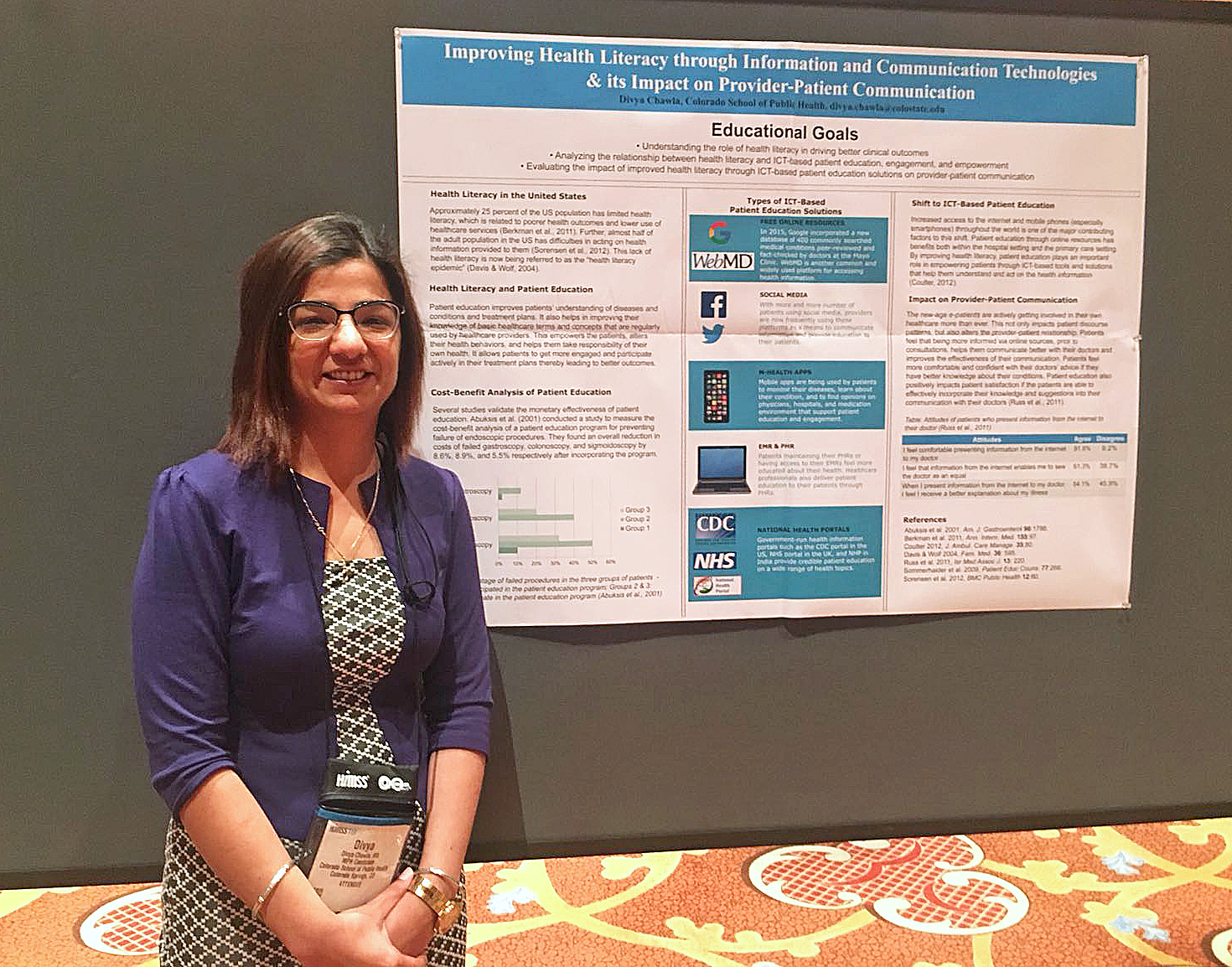Before Divya Chawla presented a poster at the recent Healthcare Information and Management Systems Society (HIMSS) conference in Las Vegas, she wrote a literature review and research proposal for Dr. Elizabeth Williams’ Relating and Organizing for Health class.
But even before that, while studying biotechnology and working in health publishing and health information technology in India, she noticed a power imbalance: Physicians being called “Doctor Sahib” (Doctor Sir) and maintaining the majority of control over conversations with their patients.
It was this observation that prompted Divya, a first-year MPH student in the Health Communication concentration, to write a research paper for Dr. Williams last semester about improving health literacy through information and communication technologies and its impact on provider-patient communication. With Williams’ go-ahead, she submitted it to HIMSS and was approved to present it as a poster at the recent conference, which she did with support from the ColoradoSPH at CSU.
About 45,000 people attended the five-day conference, which featured 1,300 exhibitors presenting the cutting edge of healthcare information technology and practitioners from around the world. In addition to meeting people who are doing the work she hopes to be a part of after earning her MPH, attending the HIMSS conference was a chance to synthesize her passions for healthcare technology and communication.
Her research and presentation are a reflection of the interests that motivate her public health studies: Educating and empowering healthcare consumers through the use of technology.
“Now that there are so many more resources available to patients because of technology, patients are becoming more educated,” she explained. “The patient, being a consumer, should have more power and I think IT has a big role to play in that, whether it’s WebMD or social media or other sources. And we’re starting to see a lot more credible resources as hospitals start to subscribe to patient education portals that doctors and patients can access.”
Education through technology
Divya said she is especially passionate about promoting technological solutions for community health workers in rural areas. A roadblock she noticed in her home state of Uttarakhand, and that is mirrored throughout low- and middle-income countries, is access to healthcare in rural areas.
“In some areas (of India), there isn’t even a clinic,” she said. “The National Rural Health Mission employs usually one woman in the village who has to be the first responder and has to provide care for the village, so providing mobile health tools to these community health workers could make a significant difference. Digital health solutions could help them deliver better care.”
With mobile technology becoming more and more prevalent, digital tools also are an important means of educating patients and empowering them in their healthcare, she said. They can be especially vital in mental health, a topic she recently wrote about for eHEALTH, a national healthcare magazine in India.
Digital healthcare tools, she said, can not only empower and educate patients, but help make up for some of the increasing demands on providers’ time. Being a part of that work – creating digital tools to improve education and communication – could mean helping “to change healthcare in the world,” she said.

